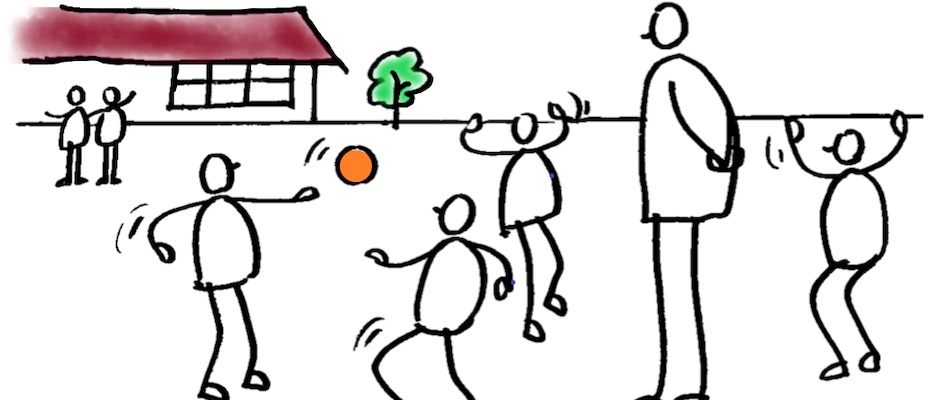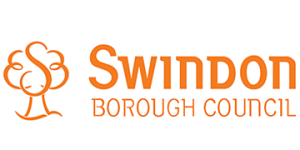Developing a new assessment resource for EPs: The Children’s Exploratory Drawings (CEDs)

During our first year of training for the educational psychology doctorate, we spent a lot of time exploring a range of assessment tools with young people.
We found that many of the resources that we enjoyed using had a basis in personal construct psychology (PCP) and, after some input on the topic at university, we were inspired to create a new resource: The Children’s Exploratory Drawings (CEDs).
Why we find Personal Construct Psychology (PCP) so useful
Exploring personal constructs is a central part of the work that EPs do. In the early days of our training, we frequently used the Blob Tree (Wilson & Long, 2018) as a rapport building activity for when we met young people for the first time. We appreciated how flexible this activity is and how it allows the child to lead the conversation in any direction they choose. The Blob Tree provides an interactive and versatile assessment tool and children always seemed to enjoy their time exploring the images.
We also regularly use Drawing the Ideal Self (Moran, 2001) or Ideal Schools (Williams & Hanke, 2007) to generate a wealth of information about the things that are important to the child and explore their views through questions and prompts.
PCP techniques can uniquely allow us to gain an appreciation for each child’s world and the sense they make of it, allowing us to share this with the adults that support them. Our interest in PCP-based assessment resources led to our discovery of the School Situation Pictures (Ravenette, 1999). We immediately saw the value of having some school specific images to explore and discuss young people’s lives at school.
The child-centred narrative that PCP-based, visual tools bring to our assessments and formulations is highly valued and helps us to hear and amplify the child’s voice. We felt there was a need for a resource that was as simple, flexible, and engaging as Blob Tree but that utilised recognisable school scenes in order to gather rich information about a young person’s life at school.
Why develop a new resource?
The first lockdown in the UK meant our placement changed overnight and EPs around the country were faced with the challenge of adapting and moving much of their work online. As we found ourselves with more time, we seized the moment to create a new assessment tool that would borrow from, and build on, many of the tools that we were already using. It was also key that this could be easily used in virtual work. We decided to share the CEDs freely as we believe in the culture of helping other professionals in their therapeutic and assessment work.
The Children’s Exploratory Drawings
We designed the Children’s Exploratory Drawings to be clearly recognisable as school scenes but without an obvious narrative and free from features which might imply gender, ethnicity, or other individual characteristics. That was quite a hard brief for our artist, but we are really pleased with what he created.
Each scene allows multiple interpretations, so that the young person can project a narrative, and give characters thoughts, motives, and feelings. This can help us explore their internal representations and core constructs around school. Alongside the images, we created a guidance document that details the CEDs theoretical and research underpinnings and a step-by-step guide to assessment, including a range of possible questions that can support explorative conversations.
Our hopes going forward
We are incredibly proud to share the CEDs and grateful for the wonderful response to it that we have had from the EP community. We are still just stepping into the world of PCP so appreciate all the knowledge held within our community and would like to continue to develop CEDs. We would love to hear from EPs who have used the CEDs and ideas they have for future developments, so please do get in touch with us or comment below if you have any feedback.
There are a number of future developments that we already have planned for the CEDs, to include: a CEDs website; new drawings to include early years and post 16; guidance around ways you can include CEDs in reports; and adapting the images to create an intervention tool.
Thank you
We want to thank all the people who have helped us along the way, particularly Tim Cooke, Bee Hartwell and Sarah Wright at the University of Southampton and Dr Ed Sayer at Southampton EPS, and also the wider EP community for their ever-present support and enthusiasm.
We presented an EP Reachout Webinar on 6th May and if you have any questions about the resource you email us at anytime.
References
Moran, H. (2001). Who do you think you are? Drawing the ideal self: A technique to explore a child’s sense of self. Clinical Child Psychology and Psychiatry, 6(4), 599–604. https://doi.org/10.1177/1359104501006004016
Ravenette, T. (1999). Personal construct theory in educational psychology. – A practitioner’s view. London: Whurr.
Timney, C. J. & Cohman, A. R. (2020). Children’s Exploratory Drawings.
Williams, J., & Hanke, D. (2007). ‘Do you know what sort of school I want?’: optimum features of school provision for pupils with autistic spectrum disorder. Good Autism Practice (GAP), 8(2), 51-63.
Wilson, P., & Long, I. (2018). The big book of blob trees. Routledge. https://doi.org/10.4324/9781351113397





very nice idea, well executed. Could also use it for after holidays thinking about going back and remembering certain issues that worry them etc. Maybe use it for teachers to enable them to understand what really winds them up!!!! Thank you for sharing